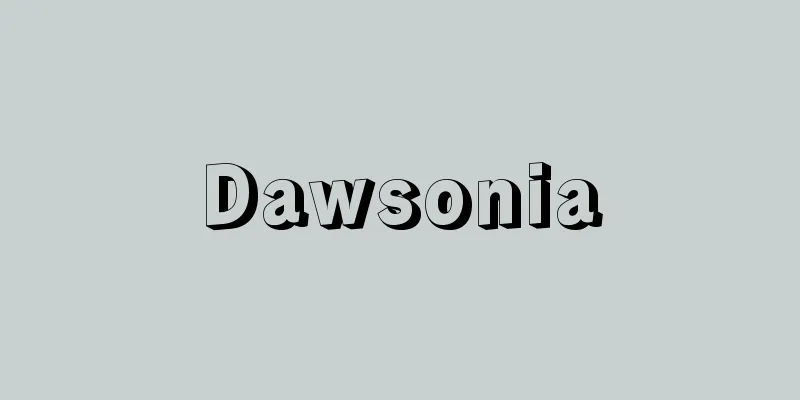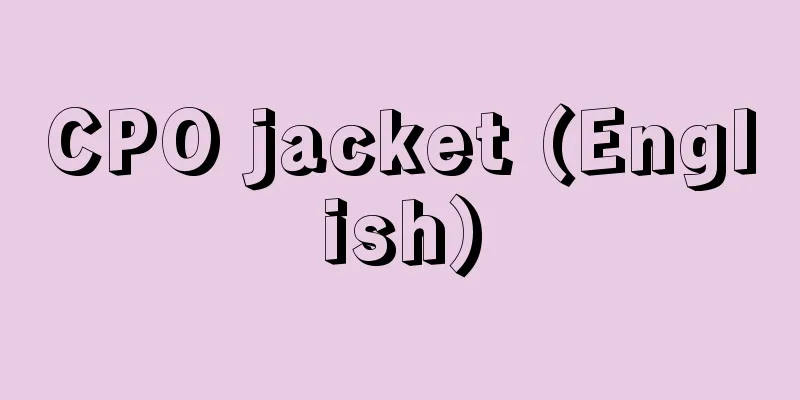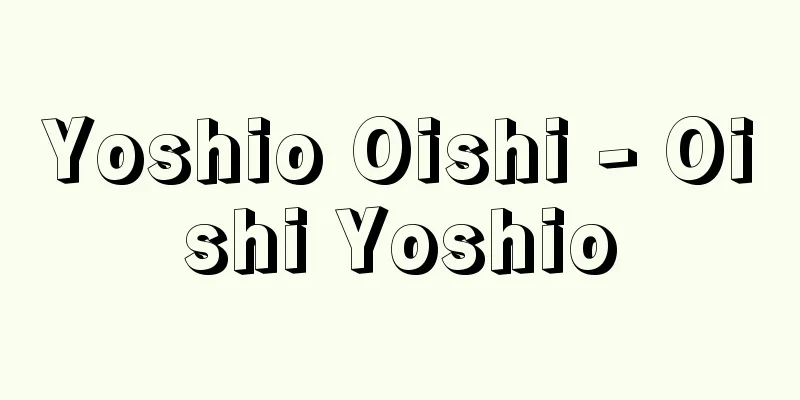Pharmaceutical industry - yakuhin kougyou

|
A general term for the manufacturing industry that produces various pharmaceutical ingredients and preparations used in medical treatment. In a broad sense, it forms part of the chemical industry. Such companies are called pharmaceutical companies and are classified as pharmaceutical manufacturers under the Pharmaceutical Affairs Law, so a pharmaceutical manufacturing license is required to manufacture pharmaceuticals, and a pharmaceutical manufacturing and sales license is required to sell them. The manufacturing process is broadly divided into the pharmaceutical process, which produces the active pharmaceutical ingredients that are the components of drugs, and the formulation process, which prepares and processes the active pharmaceutical ingredients and formulates and packages them into tablets, injections, ointments, etc. Because there are a wide variety of types of pharmaceuticals, there are many different business models, from large pharmaceutical companies that produce a wide variety of drugs using modern equipment, to individual manufacturing companies that produce only specific drugs, and even small companies that simply purchase active pharmaceutical ingredients and formulate and package them. The manufacture and sale of "switch OTC drugs," which allow prescription drugs to be sold as over-the-counter drugs (OTC drugs) as long as there are no safety issues, is now permitted, and there has been an increase in prescription drug manufacturers manufacturing and selling over-the-counter drugs as their own products or through their subsidiaries or affiliated companies. "Generic drugs" are drugs that are manufactured and sold using the same active ingredients as original drugs whose patent period has expired, and because there is no research and development cost involved, they can be sold at a lower price (however, pharmaceutical additives and manufacturing methods may differ). Companies that manufacture and sell these drugs are called generic drug manufacturers or generic manufacturers. The characteristics of the pharmaceutical industry are: (1) even though the ingredients are the same, a wide variety of drugs are produced in small quantities, such as oral medications (granules, tablets, etc.), injectables (for intravenous injections, infusions, etc.), and topical medications (ointments, patches, suppositories, etc.); (2) development, manufacturing, and sales are regulated by the Pharmaceutical Affairs Law and other laws; (3) prescription drugs are priced at the official drug price; and (4) sales representatives are qualified as medical representatives (MRs). Pharmaceuticals began to develop as a business in the Edo period, when drug dealers who made their own medicines gathered in Doshomachi, Osaka, and organized into a group of drug brokers, thriving mainly on imported herbal medicines. It is said that Toyama's door-to-door drug sales industry also developed during this period. After the Meiji Restoration, the Japanese Pharmacopoeia was established and the medical system was improved. From a military perspective, domestic production of pharmaceuticals was urgently needed, and new drug manufacturers were established to synthesize pharmaceuticals, and Japanese pharmaceutical companies developed mainly in synthetic chemistry. After World War II, the introduction of pharmaceutical technology and the development of new active pharmaceutical ingredients progressed rapidly, and pharmaceutical companies achieved extremely stable and high growth. After that, supported by the introduction of the health insurance system in 1961, while over-the-counter drugs were the main focus, the production of prescription drugs increased due to technological innovation, the introduction of new technologies, and strengthened sales promotion in both the pharmaceutical industry and medical institutions, and by the 1970s it had developed into a 1 trillion yen industry. In the ten years up to 2007, the global pharmaceutical market grew 2.6 times in size, and was said to have been worth approximately 80 trillion yen in 2006. Japan's market was 7 trillion yen in 2004, maintaining the second largest market in the world after North America, but its share in 2007 was half what it was ten years ago. Comparing company size, even Japan's largest pharmaceutical company does not rank among the top ten global pharmaceutical manufacturers in terms of sales. The growth of Japan's pharmaceutical market has been stifled by the effects of drug price reductions. Recently, pharmaceutical companies have become large-scale and globalized due to the enormous costs involved in developing new drugs. For example, even if 10,000 new compounds are synthesized, only one of them will actually be commercialized, and new drug development requires more than 10 years and huge costs of over 10 billion yen. The success or failure of new drug development has become an important factor that determines the fate of a company, as developing a groundbreaking new drug can greatly improve a company's performance. By applying genetic engineering and cell fusion technology, medicines are produced with biologically active substances such as antibiotics, vaccines, or interferons as medicinal ingredients, and are used for treatment. Drug discovery using biotechnology techniques is a future challenge. [Saito Ya] "New Drug Safety Studies" edited by Takemi Yoshida and Koichi Takeuchi (2006, Hirokawa Publishing) " "Understanding the Pharmaceutical Industry" by Minoru Noguchi (2007, Nippon Jitsugyo Publishing) [Reference item] | |Source: Shogakukan Encyclopedia Nipponica About Encyclopedia Nipponica Information | Legend |
|
医療に用いる各種の原薬、製剤などを生産する製造業の総称。広義には化学工業の一部門を形成する。その企業は製薬会社とよばれ、薬事法上医薬品製造業に分類され、医薬品の製造にあたっては医薬品製造業の許可、販売には医薬品製造販売業の許可が必要である。 製造工程は、薬剤の成分となる原薬を生産する製薬工程と、その原薬を調製加工して錠剤、注射剤、軟膏(なんこう)剤などに製剤・包装する製剤工程に大別される。医薬品は種類も多岐にわたっているので、多種の薬剤を近代的な装置で生産する大手の製薬企業から特定の薬品のみを生産する単品製造企業、さらには原薬を仕入れて製剤・包装するだけの零細企業まで、多くの業務形態が存在する。 安全性に問題がなければ医療用医薬品を一般用医薬品(OTC薬。over the counterの略)として販売することができる「スイッチOTC薬」の製造と販売が許可されるようになり、医療用医薬品メーカーでも自社製品として、または子会社や系列会社において一般用医薬品を製造販売する例が増加した。 「ジェネリック医薬品」とは特許期間が終了した先発医薬品と同じ有効成分を使って製造・販売する医薬品で、研究開発費がかからないので低価で医薬品を販売することができる(ただし、医薬品添加物等また製造方法が異なる場合がある)。これらの医薬品を製造販売する会社は後発医薬品メーカーまたはジェネリックメーカーとよばれる。 医薬品業界の特徴は、(1)同一成分でも内服剤(顆粒剤、錠剤など)、注射剤(静脈注射用、点滴用など)、外用剤(軟膏(なんこう)、貼付(ちょうふ)剤、坐剤(ざざい)など)の多品種少量生産を行っている、(2)開発、製造、販売が薬事法およびその他の法律で規制されている、(3)医療用医薬品は公定価(薬価)、(4)営業担当者がMR(Medical representative)資格をもつ、などである。 製薬が商業としては発展したのは江戸時代からであり、独自に薬をつくっていた薬種商が大阪の道修町(どしょうまち)に集まり、薬種仲買仲間として組織され、輸入漢方薬を中心として栄えた。富山の配置薬販売業もこの時期に発達したといわれている。明治維新後は日本薬局方の制定をはじめとして医薬制度の整備も行われ、軍事的側面から製薬の国内生産が急務とされ、新薬メーカーが設立されて医薬品の合成を行うようになり、日本の製薬企業は合成化学を中心として発展した。第二次世界大戦以後、製薬技術の導入と新薬効成分の開発が急速に進められ、製薬企業はきわめて安定的な高度成長を遂げた。その後、1961年(昭和36)に導入された健康保険制度に支えられ、従来は一般用医薬品が中心であったのが、製薬業、医療機関ともに技術革新や新技術の導入、販売促進強化により医療用医薬品生産が伸び、1970年代には1兆円産業に発展した。 2007年までの10年間で世界の医薬品市場は2.6倍の規模に成長し、2006年の市場規模は約80兆円といわれている。2004年の日本市場は7兆円で、北米に次ぐ世界第2位の市場を維持しているものの、2007年度のシェアは10年前の半分である。企業規模を比較すると、日本最大の製薬会社でも世界の医薬品メーカー売上高ランキングのトップ10には入っていない。薬価引き下げのあおりを受けて日本の医薬品市場の成長は抑圧されている。 最近の新薬開発には膨大な費用が必要とされるために製薬企業は大規模になり、グローバル化している。たとえば、新しい化合物を1万種合成できたとしても、実際に製品化されるのはそのうちの一つくらいで、新薬開発には10年以上という歳月と、100億円以上という多額の費用を要する。画期的な大型新薬を開発すれば会社の業績は大きく伸びるなど、新薬開発の成否は企業の命運を左右する重要な要素となっている。 遺伝子工学や細胞融合技術を応用して、抗生物質やワクチンあるいはインターフェロンなどの生理活性物質を薬効成分として医薬品を生産し、治療に用いることも行われている。バイオテクノロジーの技術を応用した創薬が今後の課題である。 [斎藤 彌] 『吉田武美、竹内幸一編『New医薬品の安全性学』(2006・広川書店)』▽『野口實著『よくわかる医薬品業界』(2007・日本実業出版社)』 [参照項目] | |出典 小学館 日本大百科全書(ニッポニカ)日本大百科全書(ニッポニカ)について 情報 | 凡例 |
<<: Separation of medical and pharmaceutical functions
>>: Pharmaceuticals - medicines
Recommend
Nenjibutsu - Buddhist altar
A statue of a Buddha or Bodhisattva that is priva...
Emperor Tsuchimikado
Year of death: 11th October 1231 (6th November 123...
Ward Lock - Ward Lock
…A device that is attached to doors, drawers, box...
Burning of books and burying of scholars
This was an incident of suppression of thought an...
Freedom of Will - Ishi no Jiyu
There are two main approaches to the freedom of w...
Basic karyotype analysis
...Diploid species are represented by 2 x , tetra...
Water tricks - Mizugei
A general term for magic tricks and acrobatics us...
Mr. Uyou - Mr. Uyou
(A fictitious character created by the Han dynasty...
Liu Fu-tong (English spelling)
[raw]? [Died] 1363 One of the warlords in the late...
thesmothetai
...the archon, whose name became the custom for t...
Punishment -
A punishment given for a crime, or an act that go...
Botryllus schlosseri (English spelling)
…Similar species include the ascidian, the light-...
Zarde
...It is about 2000km long, 165-320km wide, and h...
Myristica fragrans Houtt.
An evergreen tall tree of the Myristicae family na...
Temporary marriage - Ichijikon
… Both Sunnis and Shiites share the view that mar...









